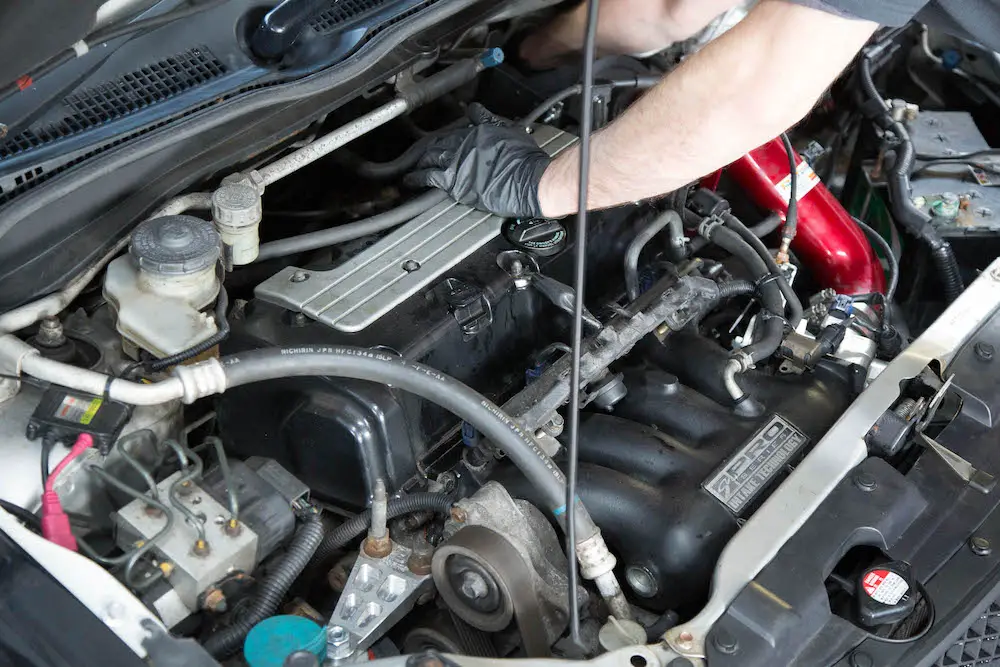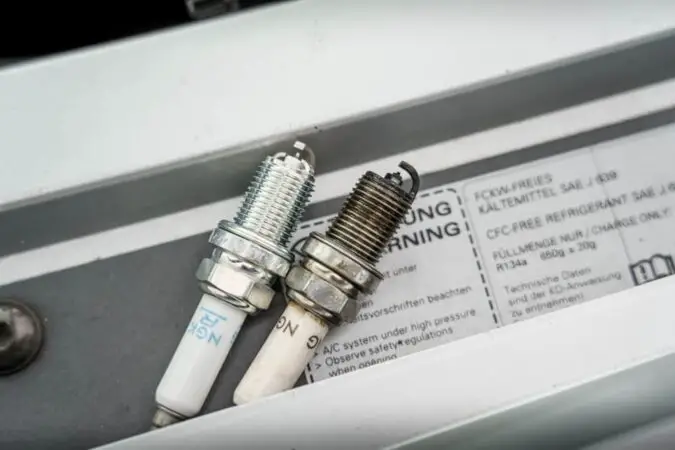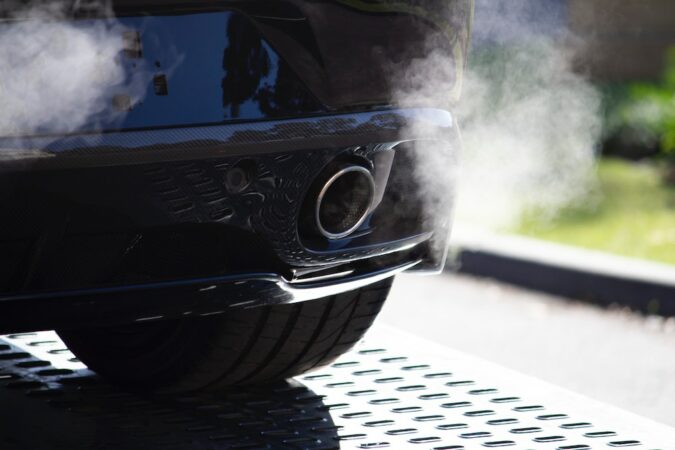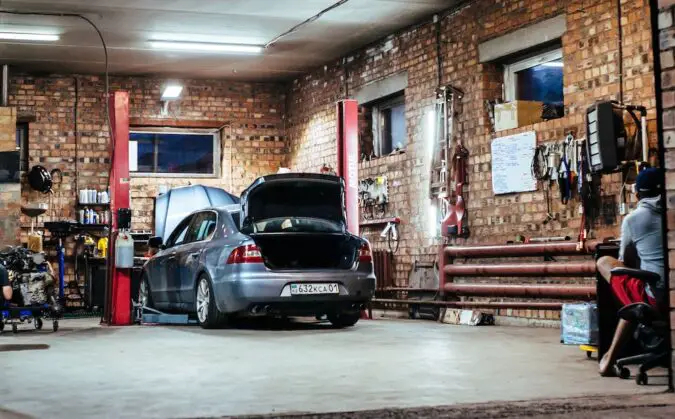Have you started experiencing weird symptoms such as rough engine idle and a smell of gasoline coming from the exhaust? Well, you might be experiencing fuel pressure regulator symptoms. But you shouldn’t worry because we are going to help you out.
Having a problem like this on your car can be really frustrating because your car could run rich. And running rich is not good because it could damage a ton of components inside of the engine as well as will pollute much more than usual.
This is why you need to learn how this fuel pressure regulator works and its main role. A ton of people confuse other fuel-related components such as the injectors and fuel pump for this fuel pressure regulator. But you shouldn’t do it. This component is another really important component that can make a night and day difference in performance when is in good condition and when is in poor condition on the other hand.
This is why we are going to learn the basics of this component and the fuel pressure regulator diagram. Then we will learn the fuel pressure regulator location and the fuel pressure regulator symptoms. After that, we will learn how you can diagnose and replace a bad fuel pressure regulator and at what cost. So, if you want to learn more, follow along.
What Is A Fuel Pressure Regulator?
Now before we learn more about the fuel pressure regulator symptoms, let’s first learn more about this component in general. What is this regulator all about and why it is so important in your car? Knowing this stuff will help you determine if you are having an issue with this component and whether or not you have to replace it. So, let’s explain the basics of this component.
This regulator is something like a valve that opens and closes based on the vacuum pressure. It basically regulates the fuel pressure that goes to the injectors.
This is essential because you don’t want too much pressure to be applied. This is why the regulator is connected with a hose to the intake manifold.
Then based on the atmospheric pressure in the intake, the regulator is regulating the amount of fuel that will be injected into the fuel rail and then into the injectors. Then the excess fuel is returned to the fuel tank.
These types of regulators are a completely normal thing in a lot of different industries, not only in cars. They are used to regulate both gases and liquids.
What is important for you is that this valve is one of the most important things that you need to make sure that is in proper working order all the time. If this valve is not in proper working order you will face a ton of fuel pressure regulator symptoms. And in the following chapters, we are going to cover precisely that. Now let’s discuss more about the diagram of this valve.
Fuel Pressure Regulator Diagram
As we covered the basics of the fuel pressure regulator. Now we can move on and understand deeper how this unit works on your car.
The first and most important thing for you to know as we mentioned previously, is that this is simply a valve-like device. Like your EGR valve if you have one.
It is a spring-loaded component that works with the help of a vacuum and has a diaphragm in the center.
This regulator basically has four connections. One is the connection from the fuel tank which is the fuel inlet. The second one is the fuel outlet that pushes fuel into the fuel rails. Then the third is the fuel return which returns the excess fuel to the tank.
And the last is the vacuum port that is mounted from the top. The vacuum port is connected through a vacuum hose to the intake manifold. This is the most important aspect since the fuel regulator is basically regulating the fuel pressure based on the vacuum that it gets from the intake manifold.
The pressure in the intake manifold is not constant. And if you apply constant fuel pressure without a fuel pressure regulator, you will face problems.
If the regulator does not receive this information about the pressure in the intake manifold, it will basically make your car run rich and you will face a ton of problems also known as the fuel regulator symptoms.
But more on this we will cover later on in this article. Another really important detail to us is the fuel pressure regulator location. The location is one of the most important aspects for you in this case if you want to locate and replace this component on your car.
Fuel Pressure Regulator Location
Now let’s cover another important topic before we start discussing the fuel pressure regulator symptoms. And that is the fuel pressure regulator location. Where is this fuel pressure regulator located on your vehicle?
The location of this component really depends from manufacturer to manufacturer. One thing is for sure and that is that this valve is located on top of the engine. But how you can distinguish it?
Frankly, it is relatively easy to do so. This component is usually mounted close to the fuel rail on your car.
The fuel rail is the component on which the injectors are mounted. So, this fuel rail holds the injectors.
And before the fuel rail, the fuel pressure regulator is mounted. This regulator is usually silver or gold in color. On aftermarket applications, you can get purple or blue colored regulators.
So, the color is one thing to pay attention to. And the second thing is its shape and the fittings that are mounted to it.
At the bottom, there is the hose that takes the excess fuel back into the fuel tank. While on the sides there are two hoses, the inlet and outlet hoses. And on top of this regulator, there is a rubber vacuum hose that goes to the intake manifold.
Also, you go online and look for your specific engine plus the fuel pressure regulator location. You will get a ton of image results as well as links to forums and other sources. But what are the bad fuel pressure regulator symptoms? More on that, next.
Bad Fuel Pressure Regulator Symptoms
As we covered the basics of the fuel pressure regulator and learned what is the purpose of this device and its location.
We think that now it is time to start discussing the bad fuel pressure regulator symptoms that you will experience when this component fails on your vehicle. Knowing the symptoms will set you aside from the competition and you will be able to tell right away that you have a problem with this regulator valve.
Another thing before we start is that this regulator can get stuck either in an open or closed position. When this regulator gets stuck in an open position can lead to low fuel pressure. And when it is stuck closed, it could lead to high fuel pressure. Now as we cleared all these things, let’s get started with the 4.7 Vortec fuel pressure regulator symptoms.
1. Engine Won’t Start
The first in our list of 5.3 Vortec fuel pressure regulator symptoms is the symptom when the engine won’t start at all.
This symptom is owed to a bad regulator. This is a regulator that is probably stuck in an open position not allowing the diaphragm to move and allowing proper fuel pressure to be delivered to the injectors.
Not enough of a boost will lead to problems like these and prevent you from starting the engine. This rarely happens though, so in most cases, you will be good. But whenever your car doesn’t want to start and you don’t have a clue why. Then reading the fuel pressure regulator symptoms will be really useful for you.
2. Engine Misfires
Another in our list of bad fuel pressure regulator symptoms that is owed to a low fuel pressure because of a fuel pressure valve stuck open is the engine misfires.
Whenever there is low fuel pressure in the system, your fuel lines will not have enough pressure. Leading to lean air to fuel mixture. The lean air to fuel mixture will cause the engine to misfire.
You will notice these misfires as small ticks coming from the top of the engine and the engine will struggle to run. It will shake a lot. Also, on the exhaust, you will notice some pops and bangs owed to these misfires that are caused by this regulator. Now let’s move on to the next low fuel pressure symptoms.
3. Fouled Spark Plugs
The next symptom that we are going to cover in our list of 5.7 Vortec fuel pressure regulator symptoms is the situation with the fouled spark plugs.
The spark plugs will get fouled if your fuel pressure regulator is stuck closed or if it’s stuck open. If the pressure valve is stuck open, your engine would run lean and this will cause blisters on the spark plugs of your vehicle.
On the other hand, if it’s stuck closed, it will run rich and will burn more fuel. This unburnt fuel will be dumped into the cylinders and this will foul the spark plugs well.
So, if you remove a spark plug and it is covered in gasoline and is all black, then it means that you could possibly suffer from these fuel pressure regulator symptoms. The only way around this problem would be to replace this component with a new one and call it a day. Later on, we are going to discuss how you can diagnose this problem based on the fuel pressure regulator symptoms.
4. Bad Fuel Economy
Another in our list of fuel pressure regulator symptoms is the poor fuel economy. Similar to the previous symptom, the poor fuel economy is attributed to a bad pressure regulator.
More precisely this is a situation of a fuel pressure regulator stuck closed and delivering an abnormally high fuel pressure. This fuel pressure means that more fuel will be pushed into the cylinders and more fuel will burn. Leading to a rich air to fuel mixture.
So, considering this, your air to fuel mixture will be broken and your car will run rich. This type of running will lead to a decrease in fuel economy and your MPG will drop quite significantly. So, beware of these Duramax fuel pressure regulator symptoms. Now let’s move on to the next set of symptoms.
5. Smell Of Gas From The Exhaust
Another in our list of bad fuel pressure regulator symptoms that we are going to cover is the smell of gasoline coming from the exhaust pipe.
There will be a really annoying smell of gasoline if your pressure regulator is stuck closed and there is too much fuel pressure.
This will lead to a high amount of fuel to be pushed into the cylinders and this fuel will basically be pushed outside of the exhaust. It will not be able to burn into the cylinders. So, if you start noticing some symptoms such as in our case with the smell of gas, it means that your car is running rich on gas. The regulator is one of the possibilities that you want to check.
6. Black Smoke And Backfiring
Another in our list of fuel pressure regulator symptoms when the valve is stuck in a closed position and the pressure is too high in the fuel lines is the situation when you have a smokey exhaust.
Your exhaust will love to smoke a lot when you are in this situation. The smoke will be mostly black in color because of the unburnt gasoline. Also, as we mentioned in the previous chapter. A strong odor of gasoline will be present in the process as well.
In addition to all these symptoms, the exhaust can even start to backfire. A backfire is a situation when the fuel ignites inside of the hot exhaust. And this is basically a detonation of fuel inside of the exhaust pipe.
And frankly, this is something that you don’t want. Your car will work like cars back in the day when the old cars produce banging sounds and they produce clouds of smoke. Basically, you will end up in this situation. So, beware of these bad fuel pressure regulator symptoms.
7. Damaged Catalytic Converter
Another on our list of bad fuel pressure regulator symptoms is the damaged catalytic converter. Believe it or not, whenever this regulator fails and is stuck closed, it will cause the engine to run rich and push gasoline into the exhaust.
Whenever there is gasoline in the exhaust, it means that it should first go through the catalytic converter and O2 sensor. And what can happen is that this gasoline will basically get inside the honeycomb structure of your catalytic converter and end up destroying it.
It will completely clog up the catalytic converter and fill it with gunk that will be impossible to remove. The only way around this will be to remove this catalytic converter and replace it with a new one as well as the fuel pressure regulator to make sure that this doesn’t repeat. Now let’s cover the last symptom in our list.
8. Gas In The Vacuum Hose
The next bad fuel pressure regulator symptoms that we are going to cover are concerned with internal damage to the diaphragm of the fuel regulator.
The first symptom that we would like to cover is the situation when there is gas in the vacuum hose. As we explained, this is the hose that goes from the fuel pressure regulator to the intake manifold.
This is a small rubber hose and when it comes to diagnosing this problem, it should be the top priority on your list to check when it comes to uncovering the problem.
Remember that this is a vacuum hose that helps the function of this component. So, no fuel should be allowed to go inside of the hose and in the intake. If there is a leak, it means that you need to replace it as soon as possible in order to prevent further damage.
How To Diagnose & Replace A Bad Fuel Pressure Regulator?
Now as we covered the bad fuel pressure regulator symptoms, now it is time to cover the diagnosing and replacement process of this component.
And frankly, diagnosing a bad regulator is one of the easiest things in the world actually. So, you should not be afraid to do it in your car. It’s dead simple to do. So, how it’s done?
Well, the first thing that you will need to do is to locate this regulator. This regulator often resembles a cylindrical metal device that has a rubber hose plugged on the top and two or three other lines from the sides and from the bottom.
It is usually at the start of the fuel rail but it doesn’t have to mean it’s like that on your car. When it comes to locating this component, you can go online and look for some diagrams of your specific engine that will show you the exact location.
Once you have located this fuel pressure regulator, you can move on to diagnosing it. The first thing that you will want to do is to remove the vacuum hose on the top of the regulator and see if there is gasoline leaking. If there is gas, then the regulator is bad and needs replacement.
Sometimes though, they will don’t show up right away. So, you will need to start the car, remove the hose and wait until the gas starts coming out. If there is gas, then the regulator is bad and needs replacement.
If the regulator doesn’t leak, it could be still stuck closed or stuck open. And in this situation, you might need to perform a fuel pressure test. For this, you will need a special tool. How it is done, you can check in the video above.
Cost To Fix Fuel Pressure Regulator Symptoms
So, we covered the fuel pressure regulator symptoms and we learned how you can diagnose and replace this regulator on your car. Now let’s see how much can you expect to pay in order to get this problem sorted out.
The average cost is somewhere between $150 to $350. The labor is cheap for this job and frankly, you can do it by yourself since it is a beginner-friendly job.
Conclusion
In this article, we have covered quite a bit when it comes to the fuel pressure regulator. First, we learned what this component is and how it works.
Then we have covered the bad fuel pressure regulator symptoms and as we learned this valve can end up stuck open, closed, or leaking. And then we learned how you can diagnose and fix the problem quickly and effectively.
F.A.Q
Now let’s answer some frequently asked questions.
What Does A Fuel Pressure Regulator Do
As its name implies, this regulator is there to regulate the pressure of the fuel. But remember that this regulator doesn’t give constant pressure. But it gives pressure based on the atmospheric pressure inside of the intake manifold. So, you will notice how on top of the regulator there is a hose that goes to the intake manifold and the vacuum activates the regulator.
Where Is The Fuel Pressure Regulator Located
This regulator is most often located at the end of the fuel rail. Or in between the fuel rail. It really depends from manufacturer to manufacturer and their decision on where to put it. So, it is useful to learn some diagrams for your engine and find the exact location.
What Are The Symptoms Of A Bad Fuel Pressure Regulator
The fuel pressure regulator symptoms include poor idle, engine misfires, the smell of gasoline coming from the exhaust, black smoke from the exhaust, and fuel leaks from the rubber hose of the regulator. And also the check engine light if these symptoms become too big.
What Causes Low Fuel Pressure
Low fuel pressure can be caused by a bad fuel pump, a bad fuel pressure regulator, or a clogged fuel filter. The regulator can get stuck in an open position and prevent proper fuel flow into the intake.
How To Test Fuel Pressure Regulator
You can test this component with a special gauge that is designed to test these types of components such as the fuel pump, the fuel pressure regulator, and injectors.
How To Test A Fuel Pressure Regulator Without Gauge
The only thing you can try without a gauge is to rely on the bad fuel pressure regulator symptoms. Or try to remove the rubber hose from the top of the regulator. If there are fuel leaks, then this regulator has probably failed and needs to be replaced.




